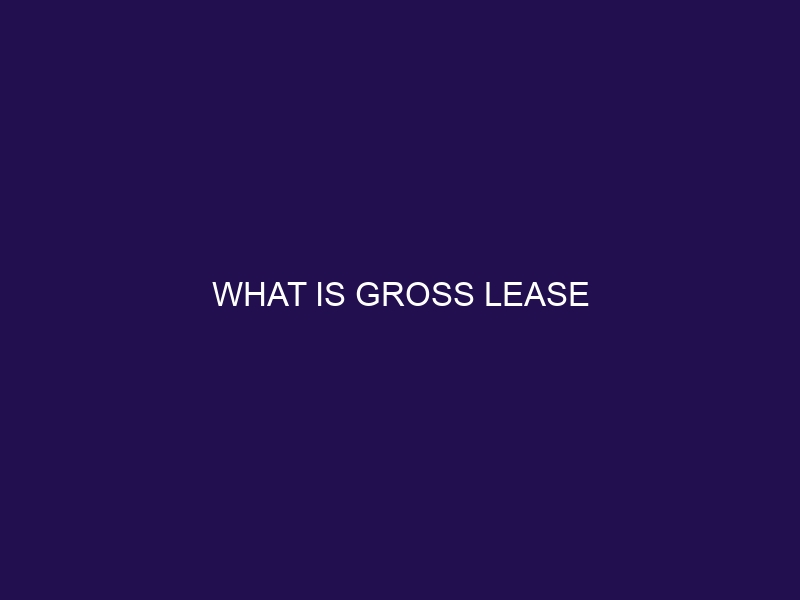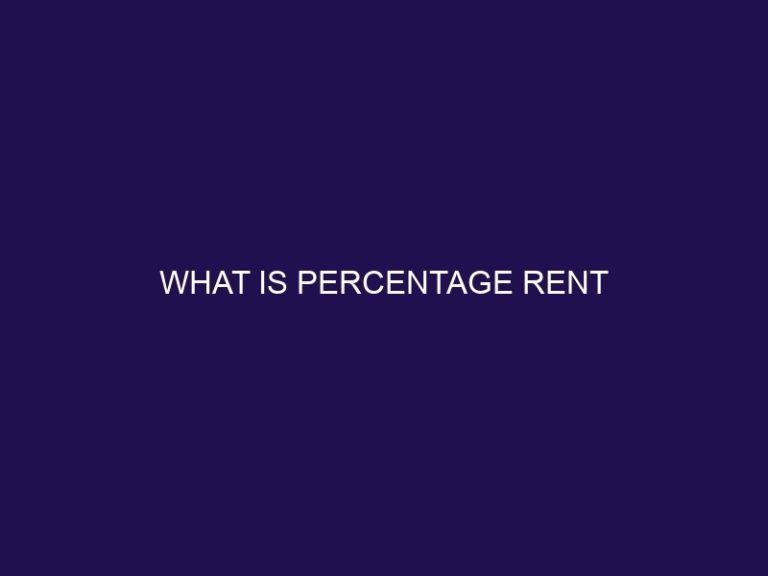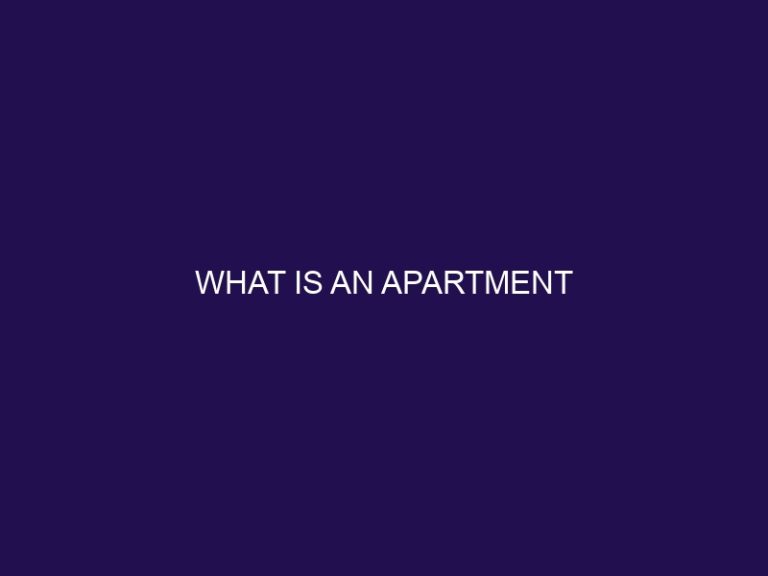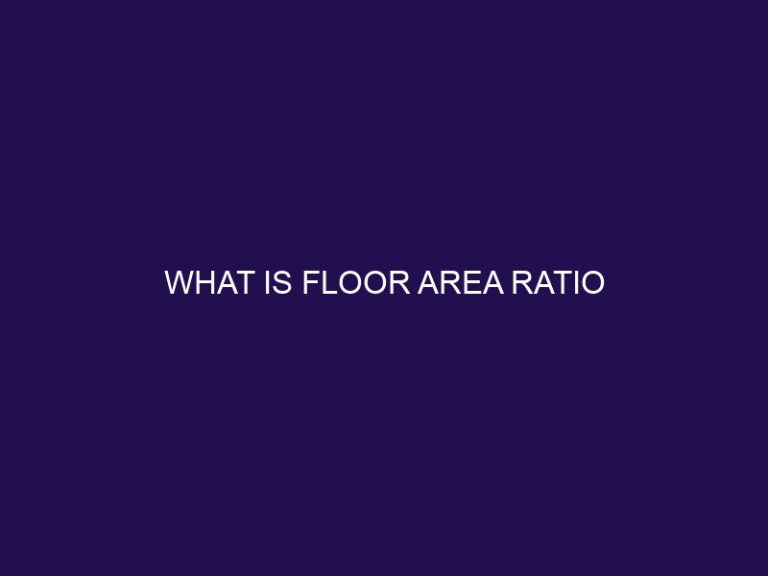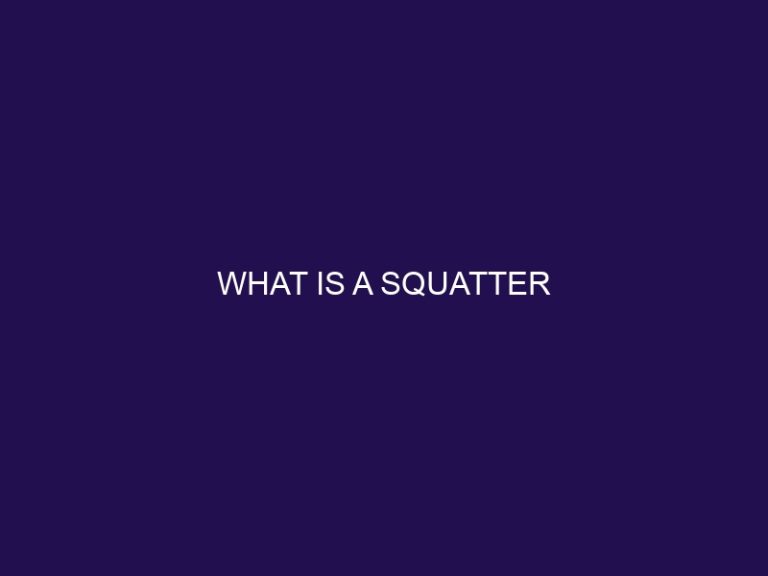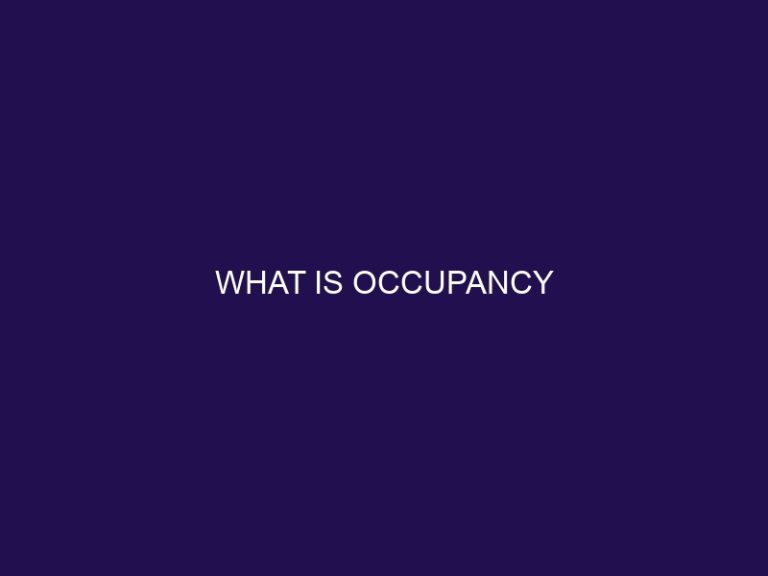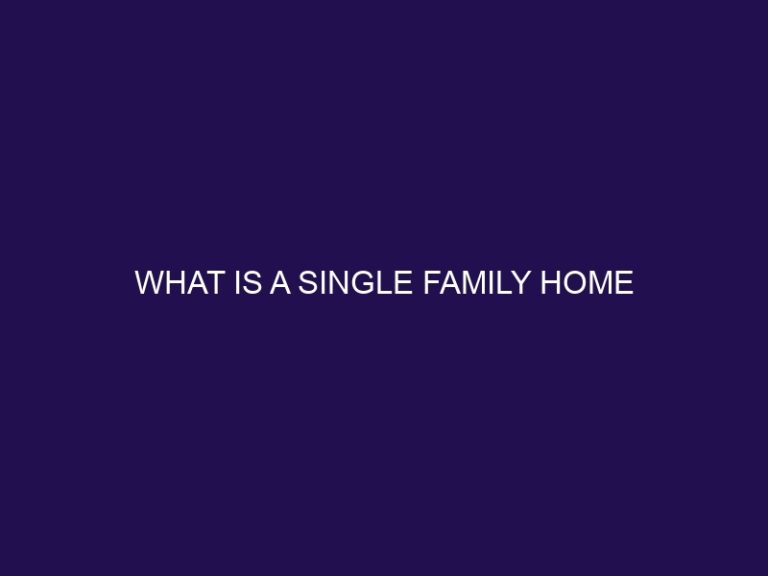What is Gross Lease
First Section:
Lease agreements are an essential aspect of the real estate industry, outlining the terms and conditions of a rental arrangement between a landlord and a tenant. Within the realm of lease agreements, different types exist, each with its own set of characteristics and considerations. One such type is the gross lease, which holds significance in the commercial real estate sector.
Gross lease, also known as a full-service lease, is a rental agreement in which the landlord assumes responsibility for all operating expenses related to the property. This includes expenses such as property taxes, insurance, maintenance, and utilities. In a gross lease, the rent is typically a fixed amount, and the tenant is not required to pay any additional costs beyond the agreed-upon rent.
Understanding the key features of a gross lease is crucial. It provides tenants with predictable and manageable rental costs, as they do not have to worry about variable expenses. the landlord takes on the responsibility of addressing maintenance issues and paying for any necessary repairs.
To gain a comprehensive understanding, it is essential to differentiate between a gross lease and a net lease. In a net lease, the tenant is responsible for paying a portion of the property’s operating expenses, in addition to the base rent. This key distinction is vital for both landlords and tenants when deciding which type of lease agreement best suits their needs.
While a gross lease offers certain benefits, such as simplicity and ease of budgeting for tenants, it also has drawbacks. The fixed rental cost might be higher compared to a net lease, as the landlord incorporates all expenses into the rent amount. This can potentially limit the tenant’s ability to negotiate on operating costs.
A gross lease is commonly used in various commercial real estate scenarios, including office spaces, retail stores, and industrial properties. It is often favored in situations where there are multiple tenants in a building or when there is a need for shared services and facilities.
When considering a gross lease, it is essential to carefully review the lease terms and conditions. Understanding the rights and responsibilities of both parties ensures a transparent and equitable rental agreement. tenants should have a clear understanding of any additional expenses that may not be covered by the landlord in a gross lease arrangement.
By comprehending the concept of a gross lease and its implications, both landlords and tenants can make informed decisions when entering into a lease agreement, ensuring a mutually beneficial relationship within the real estate market.
Understanding Lease Agreements
Lease agreements are of utmost importance when entering into a rental agreement. It is crucial to have a thorough understanding of these agreements. Here are some key points to consider while reviewing lease agreements:
1. Lease period: It is essential to determine the duration of the lease, whether it is fixed or renewable, to properly plan your stay.
2. Rental terms: When going through the lease agreement, it is important to comprehend the monthly rental amount, payment due dates, and any applicable late fees.
3. Maintenance responsibilities: One must clarify within the lease agreement who holds the responsibility for repairs and maintenance, be it major or minor issues.
4. Termination clause: Familiarize yourself with the conditions outlined in the termination clause, as this knowledge could be crucial if you find the need to end your lease agreement early.
5. Security deposit: Understanding the required amount for the security deposit is imperative, as well as comprehending its purpose and the conditions for its refund.
By diligently grasping the details of lease agreements, tenants can ensure a smooth and hassle-free rental experience.
What is a Lease Agreement?
A lease agreement is a legally binding contract between a landlord and a tenant that outlines the terms and conditions for renting a property. What is a Lease Agreement? It specifies details such as the duration of the lease, the monthly rent amount, and any rules or restrictions that apply. Different types of lease agreements exist, including residential, commercial, and sublease agreements. Each type has its own specific purpose and conditions. It is important for both parties to thoroughly understand and review the lease agreement before signing to ensure that they are aware of their rights and responsibilities. A well-written lease agreement can help avoid conflicts and protect both the landlord and the tenant.
Types of Lease Agreements
When it comes to Types of Lease Agreements, there are various types to consider depending on your specific needs and preferences.
- Residential Lease Agreement: Used when renting a house or apartment for residential purposes.
- Commercial Lease Agreement: Applicable for leasing commercial properties such as office spaces, retail stores, or warehouses.
- Industrial Lease Agreement: Designed for leasing properties specifically for industrial use, such as manufacturing or storage facilities.
- Ground Lease Agreement: Involves leasing only the land to tenants, who then construct their own buildings on the property.
- Net Lease Agreement: Shifts certain expenses, such as property taxes, insurance, and maintenance, to the tenant.
- Gross Lease Agreement: Includes all expenses in the rental amount paid by the tenant to the landlord.
Understanding the different types of lease agreements ensures that you choose the one that aligns with your specific leasing needs.
What is Gross Lease?
Looking to understand the concept of a gross lease? Look no further! In this section, we will dive into the nitty-gritty of what a gross lease is all about. Discover the definition of this leasing arrangement and explore its key features that make it unique. Whether you’re a tenant or a landlord, understanding the ins and outs of a gross lease will empower you in navigating the world of real estate. So, let’s dive in and unravel the complexities of the gross lease together!
Definition of Gross Lease
A gross lease, also known as a definition of gross lease, is a type of lease agreement where the landlord assumes responsibility for all expenses related to the property, including taxes, insurance, and maintenance. In this arrangement, the tenant pays a fixed amount of rent each month without having to worry about any additional costs. This arrangement is beneficial for tenants who prefer predictable monthly expenses and do not want to deal with the hassle of managing property expenses. However, it’s important to note that the landlord may pass on these costs to the tenant through higher rent.
Key Features of Gross Lease
Key Features of Gross Lease
Key features of a gross lease include:
- Single Payment: A key feature of a gross lease is that the tenant pays a single, fixed amount to the landlord each month, which covers all expenses related to the property.
- Inclusive Expenses: Another important aspect of a gross lease is that the agreed-upon rent includes various expenses such as property taxes, insurance, maintenance, and utilities.
- Simplicity: With a gross lease, tenants benefit from the simplicity of having a clear understanding of their financial obligations. They don’t need to worry about unexpected or fluctuating expenses.
- Predictable Budgeting: The fixed rent amount in a gross lease allows tenants to budget their finances more effectively since they know exactly how much they need to pay each month.
- Landlord Responsibility: One of the key features of a gross lease is that the landlord bears the responsibility of managing and maintaining the property. This ensures that the property remains in good condition for the tenant.
Considering these key features can help tenants make informed decisions when choosing a lease agreement that suits their needs.
Other suggestions to consider when entering a gross lease agreement include:
- Carefully review the lease terms and conditions to understand the specific rights and responsibilities of both the tenant and the landlord.
- Communicate with the landlord to clarify any questions or concerns regarding additional expenses that may not be covered by the gross lease.
- Keep an open line of communication with the landlord throughout the lease term to promptly address any maintenance or property-related issues.
Gross Lease vs. Net Lease
Discover the key distinctions between gross lease and net lease in the world of real estate. Uncover the diverse factors that separate these lease types, from financial responsibilities to property maintenance. Get ready to delve into the nuances of gross lease and net lease, and gain a deeper understanding of the implications they have on both tenants and landlords alike. Stay tuned to unlock the insight behind the differences between gross lease and net lease.
Differences Between Gross Lease and Net Lease
Understanding the differences between a gross lease and a net lease is crucial when entering into a lease agreement. Here are key distinctions to consider:
- Financial Responsibility: When comparing a gross lease and a net lease, the main difference lies in the financial responsibility. In a gross lease, the landlord covers all expenses, including property taxes, insurance, and maintenance. On the other hand, in a net lease, tenants are responsible for some or all of these costs.
- Fixed vs. Variable Costs: Another important distinction is related to the costs involved. With a gross lease, the tenant pays a fixed rent each month, regardless of expenses. However, in a net lease, there is a base rent along with additional expenses based on usage or proportionate share.
- Level of Control: Considering the level of control, tenants must assess their preferences. Gross leases offer simplicity and predictability as tenants do not directly manage or budget for property expenses. Conversely, net leases provide more control and transparency, enabling tenants to monitor and control expenses according to their needs.
- Flexibility and Negotiation: It is worth noting that lease agreements can be negotiated to accommodate variations in the financial responsibilities between the landlord and tenant, thus providing flexibility.
Benefits and Drawbacks of Gross Lease
Looking to learn more about the pros and cons of a gross lease? Look no further! In this section, we’ll dive into the benefits and drawbacks that come with opting for a gross lease. From the advantages that can save you time and money to the potential downsides you need to consider, we’ve got you covered. So, let’s explore the ins and outs of gross leases and help you make an informed decision.
Benefits of Gross Lease
Benefits of Gross Lease
A gross lease is a commercial lease agreement that offers several benefits for both landlords and tenants. It provides predictable expenses for tenants as they only have to pay a fixed monthly rent, which includes all operating expenses. This allows tenants to budget more accurately, without having to worry about unexpected costs.
One of the advantages of a gross lease is that it reduces administrative work for tenants. Landlords are responsible for managing and paying for property expenses such as maintenance, insurance, and property taxes. This takes away the administrative burden from tenants, allowing them to focus on their business.
The simplicity of a gross lease is another benefit. This type of lease arrangement is particularly attractive to small businesses or tenants who prefer a straightforward agreement. The terms of a gross lease are easy to understand, making it easier for both parties to enter into the agreement.
Additionally, a gross lease offers shared risk between landlords and tenants. Landlords assume the risk of fluctuating expenses, such as repair costs or increased property taxes. This allows tenants to solely focus on running their business without worrying about these unpredictable expenses.
Overall, a gross lease provides several benefits to both landlords and tenants, including predictable expenses, reduced administrative work, simplicity, and shared risk.
Drawbacks of Gross Lease
While gross leases have their advantages, they also come with some drawbacks that tenants and landlords should consider:
- With a gross lease, tenants typically pay a fixed amount for rent that includes all expenses. This means they have no control over individual expenses and may end up paying for services they don’t use or need.
- Landlords often factor in expenses, such as maintenance and utilities, when setting the rent for a gross lease. As a result, tenants may end up paying a higher overall rent compared to a net lease, where they only cover their specific expenses.
- Since tenants are not directly responsible for the costs of utilities, there may be less motivation to conserve energy or water. This can lead to higher utility usage and increased costs for the landlord.
- If expenses such as property taxes or insurance premiums increase during the lease term, landlords may pass these costs onto the tenant, leading to unexpected rent hikes.
When is Gross Lease Used?
When it comes to lease agreements, understanding the different types is crucial. In this section, we’ll dive into when a gross lease is used. Get ready to explore common scenarios where this type of lease comes into play, shedding light on the practical applications and benefits it offers. Whether you’re a commercial property owner or a prospective tenant, this insight will empower you to navigate the world of leasing with confidence and make informed decisions. Let’s uncover the key factors that lead to the utilization of a gross lease!
Common Scenarios for Using Gross Lease
Gross lease agreements are commonly used in various real estate scenarios. Here are some common scenarios where a gross lease is typically used:
- Commercial properties: Retail spaces, office buildings, and warehouses often employ gross leases as it provides simplicity for both landlords and tenants.
- Single-tenant properties: In situations where a single tenant occupies the entire property, a gross lease can simplify the lease terms by including all expenses in the rent.
- Short-term leases: Gross leases are frequently used for shorter lease durations, such as monthly or yearly leases, where it is more convenient to have all expenses bundled into one payment.
Considering these common scenarios for using gross lease can help landlords and tenants determine if a gross lease is the most suitable option for their specific needs.
Important Considerations with Gross Lease
When it comes to a gross lease, there are some crucial considerations to keep in mind. Dive into the lease terms and conditions, and gain an understanding of the additional expenses involved. Get ready to navigate through the intricacies of this lease type, as we uncover key insights and uncover what you need to know.
Lease Terms and Conditions
Lease terms and conditions are crucial aspects of any lease agreement, outlining the rights and responsibilities of both the landlord and tenant. These Lease Terms and Conditions can include the duration of the lease, rent payment amounts and schedule, maintenance responsibilities, and any specific provisions or restrictions. Here is a table summarizing some key Lease Terms and Conditions:
| Term | Description |
|---|---|
| Lease duration | Length of time the lease will be in effect |
| Rent amount | The agreed-upon monthly payment for occupying the space |
| Security deposit | A refundable amount paid by the tenant for damages |
| Maintenance | Identification of who is responsible for repairs |
| Termination clause | Circumstances under which the lease can be ended |
| Renewal options | Opportunities for extending the lease period |
Adhering to Lease Terms and Conditions is essential for a smooth and mutually beneficial landlord-tenant relationship. It is important for both parties to thoroughly review and understand these Lease Terms and Conditions before signing a lease agreement.
Understanding Additional Expenses
Understanding Additional Expenses is crucial when it comes to a gross lease. This type of lease agreement includes all operating costs of a property, such as maintenance, repairs, and insurance. Tenants must be aware of these additional expenses and carefully review the lease terms and conditions to understand their financial obligations. It is
In a true story, a small business owner signed a gross lease for a commercial space without fully understanding the additional expenses involved. As a result, they struggled to cover the unexpected maintenance and insurance costs, which put a strain on their business finances. This experience highlighted the importance of thoroughly reading and comprehending lease agreements, specifically when it comes to understanding additional expenses.
Frequently Asked Questions
What is a gross lease?
A gross lease is a type of commercial lease where the tenant pays a fixed amount periodically for renting the property. Unlike net leases, which fluctuate based on expenses and factors like maintenance costs, taxes, insurance, or market changes, gross leases include these expenses in the rent.
What expenses are included in a gross lease?
In a gross lease, the rent includes expenses such as maintenance costs, taxes, insurance, and in some cases, utilities or lawn maintenance. The specifics of what the rent includes can be negotiated between the tenant and landlord.
What is the difference between a gross lease and a net lease?
The main difference between a gross lease and a net lease is how expenses are handled. In a gross lease, the tenant pays a fixed rental fee that includes all costs associated with property ownership, while in a net lease, the tenant is responsible for additional charges such as taxes, utilities, and operating costs in addition to the base rent payment.
What is the “stop level” in a gross lease?
Some gross leases may have elements of net leases, such as a provision that requires the tenant to pay higher rent if the landlord incurs a certain level of expenses, known as the “stop level.” This helps the landlord recoup additional costs beyond the base rent.
Are gross leases common in commercial real estate leasing?
Yes, gross leases are commonly used in commercial real estate leasing, particularly for properties with multiple tenants. They offer simplicity for tenants and the potential for landlords to recoup costs through the fixed rental fee.
How can tenants and landlords address the misalignment of interests in a gross lease?
The misalignment of interests in a gross lease, where tenants have no incentive to reduce resource consumption, can be addressed through dialogue and subsequent agreements between tenants and landlords. Modified lease structures, such as a “net of electric” lease where the landlord covers most expenses but the tenant is responsible for electricity consumption, can also help align interests.

